| |
Home
Famous and Fascinating Women in History
Frontiersmen and Women
The World's Greatest Composers
Famous Women Spies
Great Authors of the World
Generals and other Noteworthy People
from the Civil War
The Presidents of the United States
The First Ladies of the United States
Homes and Monuments of and to
Famous People
Historical People and Events by Month for Each Day of the Year!
Famous Figures in Black History
The Calvert Family and the Lords Baltimore
Understanding the American Revolution and its People
Everything Beatles!
Everything Maryland! |
| |
|
 
|
| |  |  |
 |  | 
Abraham Lincoln
His Life,
Assassination, & Springfield Home
By
John T. Marck
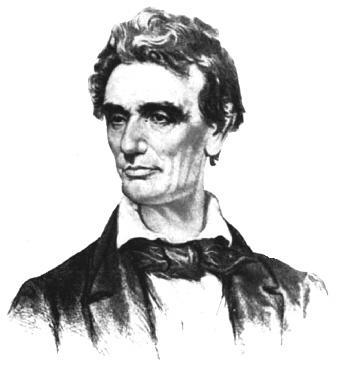
Abraham Lincoln was born on
February 12, 1809, in a log cabin near Hogenville, Hardin County
(now Larue County) Kentucky. His father was Thomas Lincoln, a
migratory farmer and carpenter, who was almost always
poverty-stricken. His mother, Nancy Hawks, died in 1818,
shortly after the family moved to what is today Spencer County,
Indiana, and little is known about her. Thomas married Sarah Bush
Johnson, who turned out to be an excellent step-mother to Abraham,
and inspired him to educate himself, Abraham had very little formal
education, having attended schools in Kentucky and Indiana that only
amounted to about a year of classroom schooling. He did teach
himself, reading over and over the few books that he owned, and any
others he could get his hands on. In 1828, he took a flatbed
voyage down river to New Orleans, but little is actually known of
the trip. Two years later, the Lincoln family moved to Macon
County, Illinois. Abraham once again visited New Orleans,
before settling in New Salem, Illinois, near Springfield. Here
he worked in a store and managed a mill. The six-foot-four
Lincoln soon became very popular with the townspeople, due in part
to his great physical strength and wonderful storytelling, but more
importantly his strength of character. In 1832, he was made a
captain of a volunteer company during the Black Hawk War, but his
unit never saw action.
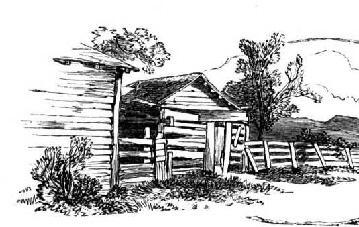
He returned to New Salem
where he became a partner in a grocery store. The venture
failed, leaving him deeply in debt. From this point Lincoln
held many jobs, including a surveyor, postmaster in a small village,
and rail splitting. Meanwhile, he continued his passion for
education and studied law.
In 1834,
Lincoln was elected to the state legislature where he would go on to
serve four successive terms until 1848. As a representative he
acquired popularity as a Whig. After studying on his own, he
obtained his law license in 1836. The following year he moved
to Springfield and became a law partner of John T. Stuart. As
an attorney, Lincoln possessed a great ability in law, was an
excellent speaker, and understood the complexities of argument.
Lincoln would also go on to be law partners with Stephen Logan and
William H. Herndon.
Lincoln's
love interest at this time was Mary Todd. Although they had a
worrisome courtship, they married in 1842. Lincoln's
involvement in politics continued and he was elected to Congress,
serving one term from 1847-1849. During the Mexican War, as a
Whig, he attacked the motives behind the war, and thus was deemed
somewhat unpatriotic, and lost some of his popularity in his home
state. During his tenure in 1848, he worked for Zachary
Taylor, a Whig candidate. However, believing he would be
reciprocated with the position of Commissioner of the General Land
Office, and not receiving this position, he became disenchanted,
leaving politics and returning to his law practice.
In 1854,
he once again entered politics upon getting caught up with the issue
of slavery. He strongly opposed the politics of Stephen A.
Douglas, as well as the Kansas-Nebraska Act. In Springfield
and Peoria, Illinois, he gave a speech attacking the question of
slavery and beseeched those Democratic ideals embodied in the
Declaration of Independence. In 1855, he decided to run for
Senate, but was defeated. By this time his beliefs were
straying from that of the Whigs, and leaning toward the new
Republican Party, thus he became a Republican this same year.
As an opponent of slavery he rose to the forefront of the Republican
Party whose members believed he would carry the support of both
abolitionists and conservative Free-Staters at the Republican
Convention of 1856. Consequently, he was considered as a
possible vice-presidential candidate. In 1858, he was chosen
to oppose Stephen A. Douglas in the Illinois senatorial race.
Lincoln accepted the nomination and challenged Douglas to several
debates, of which seven were held. Lincoln was
exceptional in his speeches and supported the Democratic beliefs and
opposed slavery. Although Lincoln would not have been
classified as an abolitionist, he did consider slavery an evil
injustice. Again, he lost the election for his bid for
senator, but did make his mark as a likely presidential candidate.
At the Republican Convention in May 1860, Lincoln was nominated for
president. In the election, the Democratic Party was split.
Lincoln was opposed by Douglas, a Northern Democratic; John C.
Breckinridge, a Southern Democratic; and John Bell, a Constitutional
Unionist. In spite of this, Lincoln was elected the sixteenth
President of the United States by popular vote.
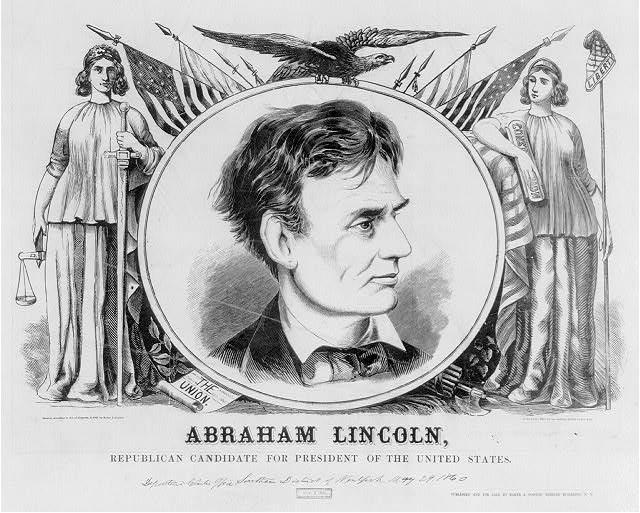
Lincoln's
election to President was a signal for secession in the South.
Any and all plans for compromise had failed. By the time
Lincoln gave his inaugural address, seven states had seceded from
the Union. Lincoln condemned and denounced secession, vowing
to preserve the Union at all costs, while also guaranteeing that no
force would be used in doing so. Still, within a short time,
he ordered supplies be taken to Fort Sumter, and the South regarded
this as an act of war. On April 12, 1861, the South
fired upon Fort Sumter and the Civil War had begun.
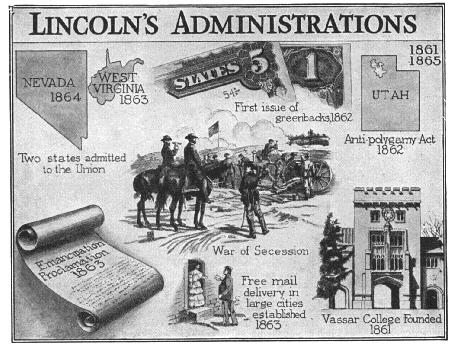
Although
Abraham Lincoln is one of the most skilled and beloved Presidents,
he did meet with some criticism during the war years.
Generally, he handled the war with considerable skill and strength
by the immediate issuance of a summons to the militia (an act that
caused the secession of four more Southern states); the blockade of
Confederate ports, and the suspension of Habeas Corpus.
He adhered to his decision to suspend Habeas Corpus in spite
of the Supreme Court ruling against him. He also extended his
executive power, but continued restraint in their regard.
During the
war, Lincoln steadfastly continued his course, in spite of the fact
that his cabinet was riddled with jealousy and hatred, causing him
to act alone many times, while maintaining his outstanding wisdom
and tolerance.
Early on
in the war, Lincoln made some bad military decisions. His
decision to order Union troops directly into Virginia resulted in
their defeat at the First Battle of Bull Run, as well as his
frequent replacement of commanders before appointing General Ulysses
S. Grant commander-in-chief. Furthermore, he rescinded David
Hunter's
orders to free the slaves in their own military, but after Antietam,
issued his own orders, in the form of the Emancipation Proclamation.
Abraham
Lincoln's
greatest speech, and one of the greatest of all time, was his
Gettysburg Address in 1863. As the election drew near, Lincoln
had lost support from some of the Republican leaders. But, his
appointment of Grant as commander-in-chief, along with General
William T. Sherman's
taking of Atlanta and subsequent successful "March to the Sea,"
clinched his reelection to a second term by an overwhelming victory
defeating his opponent, George B. McClellan.
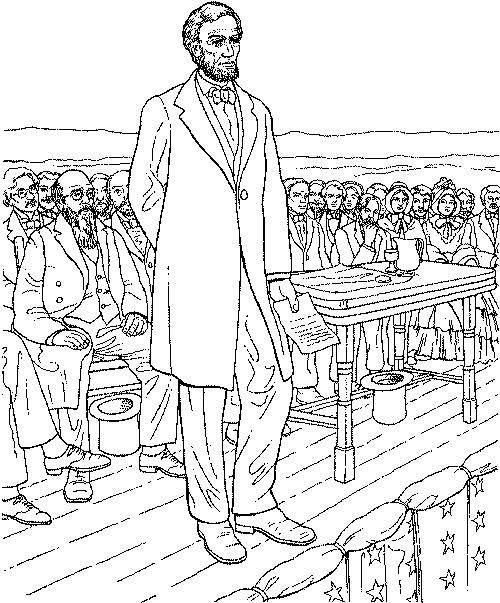
In
President Lincoln's
second inaugural address, he spoke of forgiveness, and a plea for a
new country, saying, "With malice toward none, with charity for
all." Lincoln did live to see the end of the war, with General
Lee surrendering the Army of Northern Virginia on April 9, 1865.
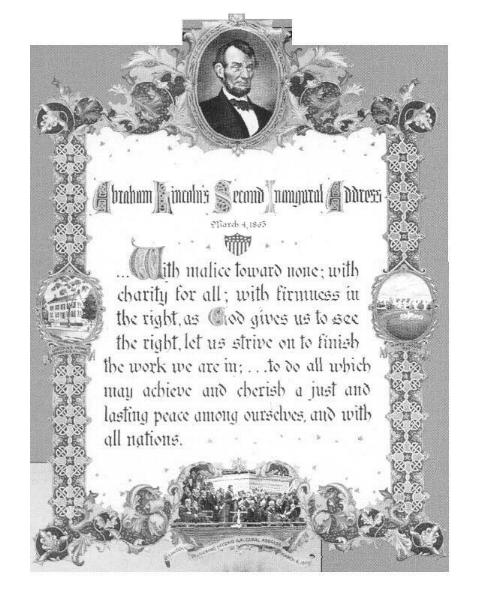
But,
tragically, Lincoln did not live to see peace. On April
14, 1865, President Abraham Lincoln, while enjoying the play "Our
American Cousin," was shot at point-blank range by John Wilkes
Booth.


Artist rendition of President Lincoln
in his death bed.
President
Lincoln's
body had been lying in state in the White House for three days, from
April 17 to 19, 1865. On April 19, a funeral service was held
in the East Room of the White House. Following the service, a
long and solemn funeral procession escorted the casket to the
Capitol rotunda, where the public was able to view it for three
days. On April 21, the casket bearing the body of Abraham
Lincoln was taken from the Capital and put on board a special train
bound for Springfield, Illinois. On May 3, 1985, President
Lincoln's
body arrived at Springfield.
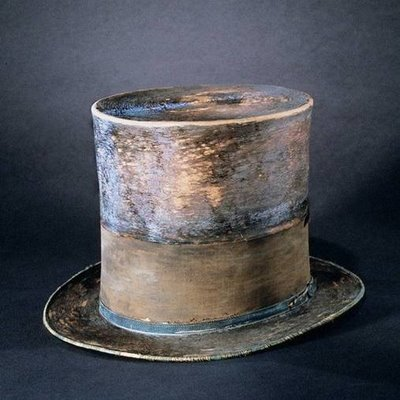
The actual hat President Lincoln wore
to Ford's Theatre the night he was killed.
The
Lincoln Assassination Conspirators are Tried
Andrew
Johnson, now the seventeenth President of the United States, ordered
on May 10, 1865, the formation of a military commission to try the
accused persons arrested in connection with the assassination of
President Lincoln.
The trial
began on May 10, on the third floor of the Old Arsenal Penitentiary
that today is located on the grounds of Fort Lesley J. McNair.
The trial lasted until June 30, 1865. The presiding officer
was the Honorable Judge Advocate General Joseph Holt. Although
the defendants were permitted to be represented by counsel, and
could call witnesses, they were not permitted to testify themselves.
The
Military Commission consisted of the following members: Lieutenant
Colonel David R. Clendenin, Brevet Colonel Charles Tompkins,
Brigadier General Thomas M. Harris, Brigadier General Albion P.
Howe, Brevet Brigadier General James A. Ekin, Major General Lew
Wallace, Major General David Hunter, Brigadier General Robert S.
Foster, Brevet Major General August V. Kautz, the Honorable John
Bingham (Congressman -Special Judge Advocate), Colonel Henry L.
Burnett (Special Judge Advocate), and Brigadier General Joseph Holt
(Judge Advocate and Recorder).
During the
two month trial, Major General Lew Wallace made several pencil
sketches of the defendants, except Mrs. Surratt, who wore a heavy
veil throughout the trial.
LEWIS
PAINE:
Charged
with conspiracy and the attempted assassination of Secretary of
State William Seward. Paine was found guilty, sentenced to
death, and hanged on July 7, 1865.
DAVID
HEROLD:
Charged
with conspiracy for his part in guiding Paine to Seward's
house, and for assisting Booth during the twelve days they fled from
Federal authorities. Herold was found guilty, sentenced to death,
and hanged on July 7, 1865.
GEORGE
ATZERODT:
Charged
with conspiracy in that he conspired with Booth. Although he
made no attempt to kill Vice-President Andrew Johnson, he
nonetheless asked suspicious questions of the Kirkwood House
bartender. He was found guilty, sentenced to death, and hanged
on July 7, 1865.
Dr. SAMUEL
MUDD:
Charged
with conspiring with Booth, as well as aiding him during his escape
by providing shelter and rendering medical aid by setting his broken
leg. He was found guilty and sentenced to life imprisonment.
However, he received a pardon from President Johnson in February
1869. He returned to his home near Waldorf, Charles County,
Maryland, where he lived until his death from pneumonia on January
10, 1883.
SAMUEL
ARNOLD:
Charged
with being a part of Booth's
earlier plot to kidnap President Lincoln. He was found guilty
and sentenced to life imprisonment, but was pardoned in 1869 with
Dr. Mudd. He died in 1906.
MICHAEL O'LAUGHLEN:
As with
Arnold, O'Laughlen
was charged with the conspiracy to kidnap the President. He
was found guilty and sentenced to life imprisonment, but died in
Fort Jefferson Prison of yellow fever on September 23, 1867.
EDMAN
"NED"
SPANGLER:
Charged
with assisting Booth in his escape from Ford's
Theatre. He was found guilty and sentenced to six years
imprisonment. He was pardoned along with the others in 1869.
After his release, he worked in Baltimore for John Ford until 1873.
He then traveled to Dr. Mudd's
house where he lived on some land given him by the doctor. He
died February 7, 1875.
MARY
SURRATT:
Charged with conspiring with
Booth, in that she provided supplies, ran errands, and facilitated
Booth's
escape. It was further alleged that Booth and his
coconspirators used her boardinghouse to hold meetings. She
was found guilty, sentenced to death, and hanged on July 7, 1865.
She was the first woman to be executed in the United States.
The Objects of Lincoln and Booth
The
objects that were saved the night of Lincoln's
assassination were done so for their historical value. Among
those were the President's
clothes, gloves, boots, cane and contents of his pockets.

The
objects found in his pockets are: a pocketknife, linen handkerchief,
sleeve button, watch fob, two pairs of spectacles, a tiny pencil, a
leather wallet that contained a Confederate five-dollar bill, and
nine newspaper clippings, that dealt with praising the President,
and others that dealt with the issues of the day that were on
Lincoln's
mind. Also preserved were Lincoln's
white shirt and tie, and black suit that included a vest and a
long-skirted frock coat; his size 14 black leather boots, that were
banded at the top with maroon goatskin, and white gloves. The gloves
were found stuffed in his coat pockets. Lincoln did not like to wear
them, and considered them a nuisance, but carried them to please his
wife, who felt that a gentleman should cover his hands. Other items
preserved were Lincoln's
beaver hat and silver-headed ebony cane.
President
Lincoln's
black walnut chair in which he was sitting when assassinated was
owned by John T. Ford. It was Lincoln's
favorite, and Ford brought it from his home whenever Lincoln
attended performances at Ford's
Theatre. Close inspection of the chair shows that there is a
dark stain on the back in the red upholstery, which was thought to
be blood at the time. However, the stain is actually from the
soiling left from the hair ointment that was fashionable for men
during this time. The chair is on display at the Henry Ford
Museum in Dearborn, Michigan. This is the "Ford" of automobile
fame, and no relation to Ford's
Theatre.
The State
Box where Lincoln sat at Ford's
Theatre was decorated with five flags, four of which were U.S., and
the fifth being a Treasury Department Regimental flag. The
engraving in the center is that of George Washington. Today,
visitors to Ford's
Theatre can see two original items that were present on the day of
the assassination. They are the Washington engraving, and the
sofa in which Major Rathbone and his fiancée sat that fateful night.
The
derringer, and lead ball, used by John Wilkes Booth have been
preserved and can be seen today. The derringer is six inches
in length, with a two and one-half-inch barrel, and was manufactured
by Henry Derringer of Philadelphia, Pennsylvania. It is
commonly referred to as the
"Philadelphia
Derringer." The trigger and mountings were made of German
silver, and the butt of the weapon contained a small box that held
an extra percussion cap.
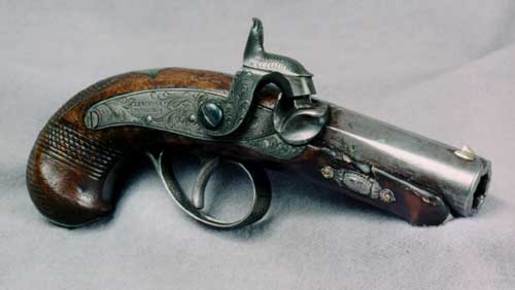
On the night of the assassination, it was found on the floor of the
State Box at Ford's
by William T. Kent. Today it is in the museum in the basement
of Ford's
Theatre. When an autopsy was performed on President Lincoln,
the lead ball that had lodged in his brain was removed. It
remained in the possession of the War Department until 1940, when it
was turned over to the Department of the Interior. In 1956,
the War Department requested it back from the Department of the
Interior, and they complied. In 1956, it was placed on display
and remains so today at the Walter Reed Army Medical Museum in
Washington, D.C. Also on display are fragments of Lincoln's
skull, and the vertebrae of John Wilkes Booth. The museum is
located at Elder and Georgia Avenue.
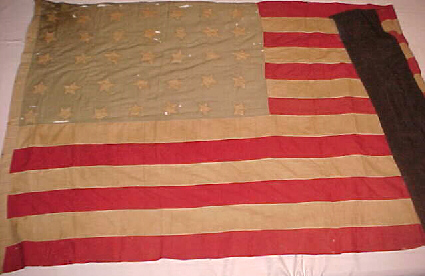
This is a photograph of an actual
35 star US Flag that was hand made by my great grandmother, Mrs. John Daniel
Webster Thayer, between 1863 and 1865, originally intended to be flown at the end of the
Civil War in 1865. The black mourning stripe was added and
flown for the funerals of
Abraham Lincoln
in 1865, James A. Garfield in 1881,
Ulysses S. Grant in 1885,
William McKinley in
1901, and Warren Harding in 1923.
In 1941, she gave this flag to my father, William John Marck, Jr.,
who passed it down to me in 2008. Sadly my father passed away on
July 25, 2008. This flag has been in my family since between 1863
and 1865. As it was
first flown for the funeral of Abraham Lincoln, I thought it
appropriate to include it here.
The US Flag added
the 35th star upon West Virginia joining the Union on June 20, 1863,
and was the US Flag from July 4, 1863 to July 3, 1865. My
grandmother added the 36th star to the flag Canton (or Union),
partially seen in this photo, upon Nevada joining the Union on
October 31, 1864, and became the official US Flag on July 4, 1865.
Being between 157-159 years old, it is in very good shape.
Quick Biological Facts
Abraham Lincoln
16th President
Term- March 4, 1861 to April 15, 1865
Republican Party
Birth: Sinking Spring Farm, Hardin County, Kentucky, February 12,
1809.
Ancestry: English
Marriage: Springfield, Illinois, November 4, 1842 to Mary Todd, who
was born in Lexington, Kentucky, December 13, 1818. Mary died in
Springfield, Illinois, July 16, 1882, and is buried in Oak Ridge
Cemetery, Springfield, Illinois.
Children: Robert Todd (1843-1926); Edward Baker (1846-1850); William
Wallace (1850-1862); Thomas ("Tad")(1852-1871).
Home: Eighth & Jackson Streets, Springfield, Illinois.
Education: Tutors, self-educated.
Religion: No specific denomination.
Occupation before Presidency: Store Clerk; store owner; ferry pilot;
surveyor; postmaster; lawyer.
Military Service: Served in volunteer company for three months
during Black Hawk War (1832).
Pre-Presidential Offices: Member of Illinois General Assembly;
Member of U.S. House of Representatives.
Age at Inauguration: 52
First Administration: Vice President: Hannibal Hamlin of Maine,
Inauguration March 4, 1861, The Capital,
Washington, D.C.
Second Administration: Vice President: Andrew Johnson of Tennessee,
Inauguration March 4, 1865, The Capital, Washington, D.C.
Death: Washington, D.C., April 15, 1865.
Cause of Death: Assassination at age 56. Shot by John Wilkes Booth,
April 14, 1865, at Ford's Theatre, Washington, D.C.
Place of Burial: Oak Ridge Cemetery, Springfield, Illinois.
Interesting Facts:
*Lincoln was a passionate reader, and would walk as far as twenty
miles to get books. Being self-educated he taught himself law and
became a successful lawyer.
*His speeches and writings are legend,
including his Gettysburg Address and his Emancipation Proclamation,
which directed that all slaves be freed.
*President Lincoln once
signed a check that was merely endorsed to a one-legged colored
man.
*Tragically, there are three
similarities in the assassinations of President Lincoln and
President Kennedy. They were both shot on a Friday, in the back of
the head, while sitting next to their wives.
Lincoln's Springfield
Home
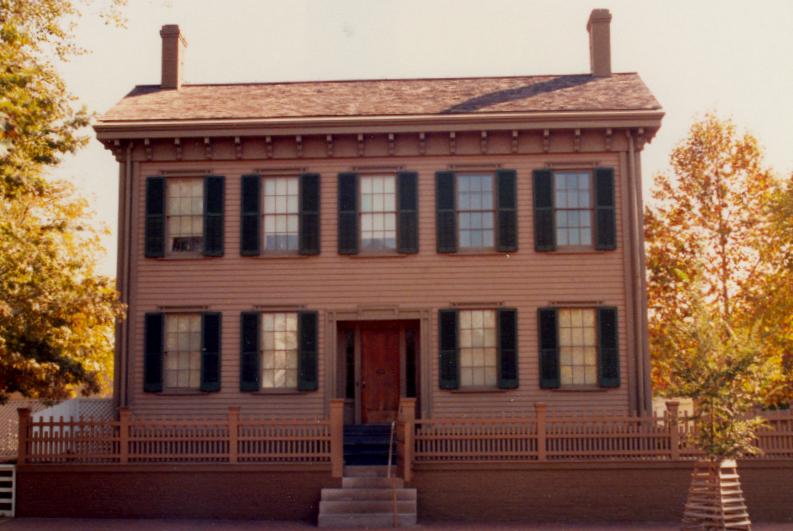
The Lincoln Home Visitor
Center, located at 426 South Seventh Street in Springfield is open
from 8:30 a.m. to 5p.m. daily except January 1st, Thanksgiving, and
December 25th.
When you walk into Lincoln's
Springfield home you are immediately taken back to the 1800s,
a feeling that Lincoln himself still lived there. As you look
down the hallway, you'll
notice a coat rack, where is placed Lincoln's
stovepipe hat, and scarf. You almost say to yourself, "Oh, I
see Mr. Lincoln is home."
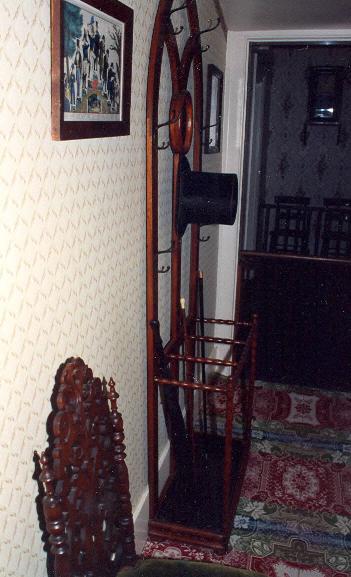
As the
Lincoln Home National Historic Site reports,
A The
Visitor Center and first floor of the Lincoln Home are accessible as
are the exhibits "What a Pleasant Home Abe Lincoln Has" and "If
These Walls Could Talk." Wheelchairs are available for use within
the Site. Accessible parking is available in the Site's parking lot.
Personal amplified listening devices are available for loan.
Touchable plaster casts of Mr. Lincoln's face and hands are also
available. The orientation film, "At Home with Mr. Lincoln" is
captioned.
"My
friends. No one, not in my situation, can appreciate my feeling of
sadness at this parting. To this place, and the kindness of these
people, I owe everything." An emotional Abraham Lincoln opened
his farewell remarks to the citizens of Springfield, Illinois with
these words on February 11, 1861. Lincoln was leaving his friends
and neighbors of twenty-four years, and the home that he and his
family had lived in for seventeen years, to serve as president of a
nation on the verge of Civil War.
The Lincoln home, the
centerpiece of the Lincoln Home National Historic Site, has been
restored to its 1860s appearance, revealing Lincoln as husband,
father, politician, and President-elect. It stands in the midst of a
four block historic neighborhood which the National Park Service is
restoring so that the neighborhood, like the house, will appear much
as Lincoln would have remembered it.
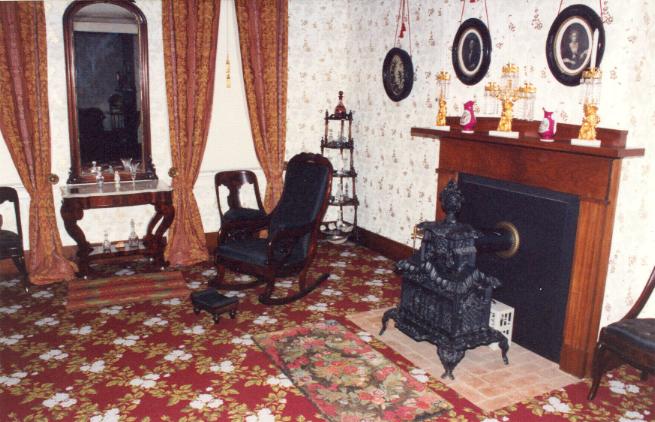
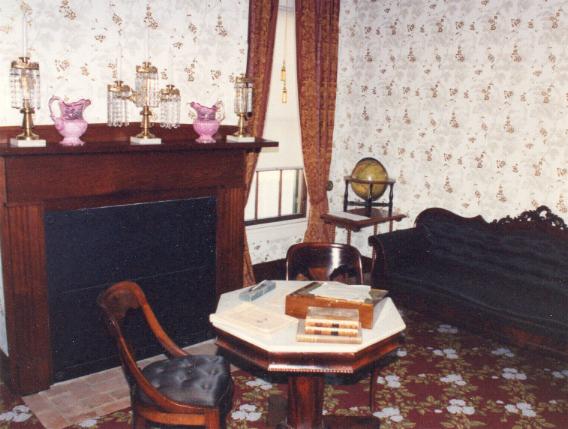
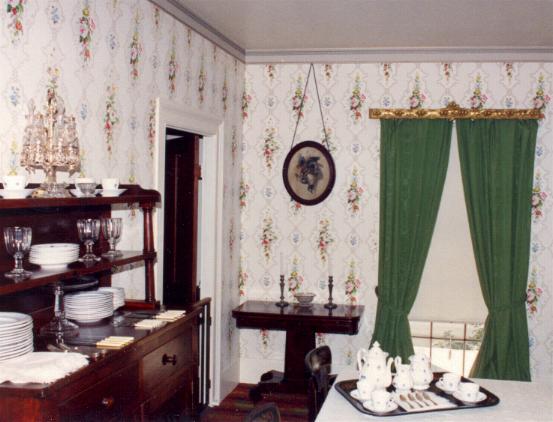
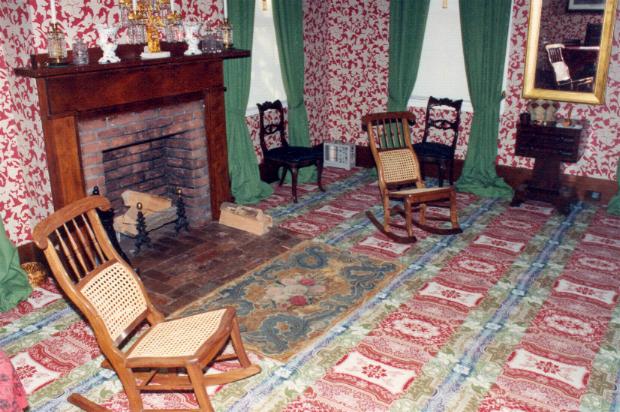

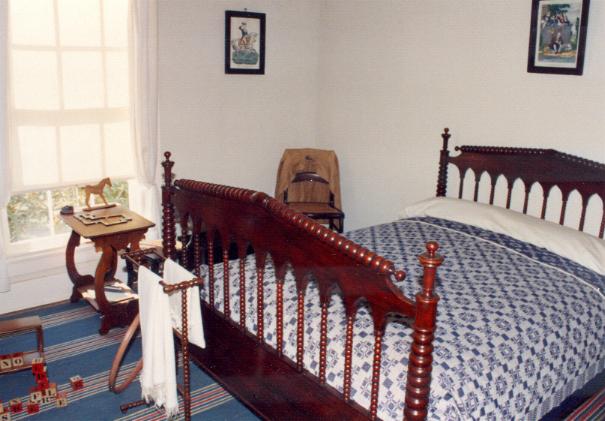
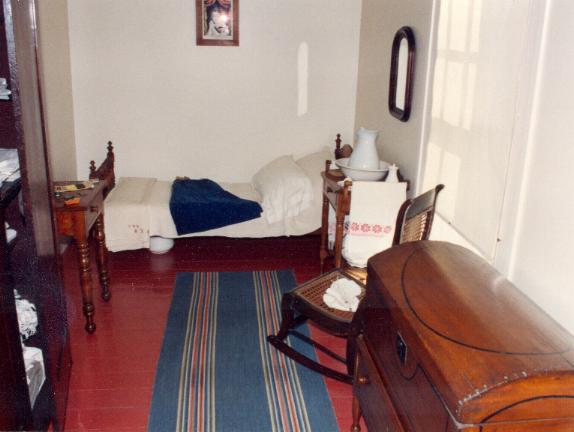
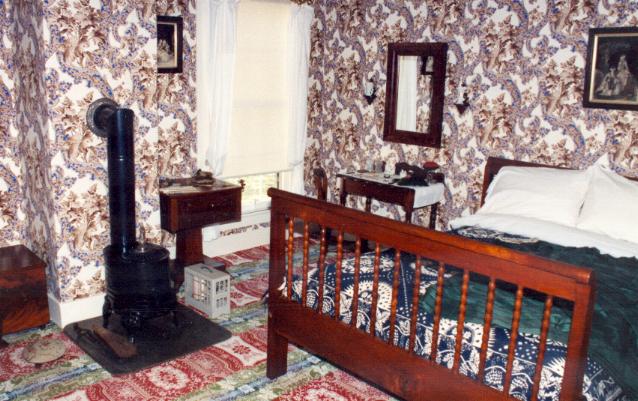
There are
a variety of visitor activities available at Lincoln Home National
Historic Site. The only access to the Lincoln Home is with a free
ticket for a specific tour time. Free tickets and Site orientation
are provided at the Visitor Center Information Desk. School groups,
charter tours, or other large groups must reserve Lincoln Home tours
in advance by contacting the Springfield Convention and Visitors
Bureau.
The Visitor Center: Here
the free Lincoln Home tour tickets are distributed at the Visitor
Center Information Desk. The Visitor Center also offers an
orientation film, temporary exhibits, a Museum Shop, Springfield
area information, and restrooms.
Exhibits
are located within the historic Lincoln neighborhood, including
"What a Pleasant Home Abe Lincoln Has" in the Dean House which
focuses on the Lincoln family's life in Springfield and "If These
Walls Could Talk@
in the Arnold house which focuses on historic preservation.
Also, you
may stroll through the four block historic area to see some of the
houses of the Lincoln neighborhood. One should plan on 12
to 2 hours for a comprehensive visit. After one visits Monticello
and Mount Vernon, you next stop should definitely be Lincoln's
home in Springfield.
The Lincoln Tomb

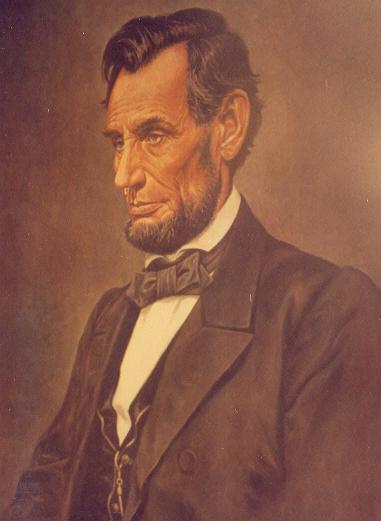
Copyright ©
1992-2022 by John
T. Marck. Information for this article came from a variety of
excellent sources. These include: Tudor Hall, Bel Air, Maryland, the
home of John Wilkes Booth, and the Fox Family; The Surratt House
Museum, Clinton, Maryland; My father, William John Marck, Jr., a
historian and teacher; Springfield, Illinois and the National Park
Service at the Lincoln Home National Historic Site; Blood On The
Moon, by Edward Steers, Jr., The University Press of Kentucky,
2001; A True History of the Assassination of Abraham Lincoln and
of the Conspiracy of 1865 by Louis L. Weichmann, Alfred A. Knoff
Publisher, New York 1979; Lincoln by David Herbert Donald,
Simon and Schuster, 1995; The Death of Lincoln by
Clara E. Laughlin; and the section, "The Objects of Lincoln and
Booth," from Time-Life. Photographs of the Lincoln Springfield
Home and the US Flag, Copyright (c) 2022 by John T. Marck.
A Splendid Time Is Guaranteed For All
| | |
| |

